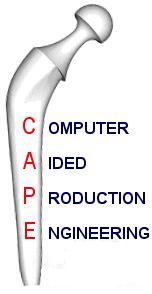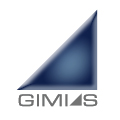Related Research Articles

Interoperability is a characteristic of a product or system to work with other products or systems. While the term was initially defined for information technology or systems engineering services to allow for information exchange, a broader definition takes into account social, political, and organizational factors that impact system-to-system performance.
Message-oriented middleware (MOM) is software or hardware infrastructure supporting sending and receiving messages between distributed systems. MOM allows application modules to be distributed over heterogeneous platforms and reduces the complexity of developing applications that span multiple operating systems and network protocols. The middleware creates a distributed communications layer that insulates the application developer from the details of the various operating systems and network interfaces. APIs that extend across diverse platforms and networks are typically provided by MOM.

The Ada Semantic Interface Specification (ASIS) is a layered, open architecture providing vendor-independent access to the Ada Library Environment. It allows for the static analysis of Ada programs and libraries. It is an open, published interface library that consists of the Ada environment and their tools and applications.

Computer-aided production engineering (CAPE) is a relatively new and significant branch of engineering. Global manufacturing has changed the environment in which goods are produced. Meanwhile, the rapid development of electronics and communication technologies has required design and manufacturing to keep pace.

The Common Image Generator Interface (CIGI), is an on-the-wire data protocol that allows communication between an Image Generator and its host simulation. The interface is designed to promote a standard way for a host device to communicate with an image generator (IG) within the industry.
The international standard IEC 61499, addressing the topic of function blocks for industrial process measurement and control systems, was initially published by the International Electrotechnical Commission (IEC) in 2005. The specification of IEC 61499 defines a generic model for distributed control systems and is based on the IEC 61131 standard. The concepts of IEC 61499 are also explained by Lewis and Zoitl as well as Vyatkin.
SensorML is an approved Open Geospatial Consortium standard and an XML encoding for describing sensors and measurement processes. SensorML can be used to describe a wide range of sensors, including both dynamic and stationary platforms and both in-situ and remote sensors.

The Green Building XML schema (gbXML) is an open schema developed to facilitate transfer of building data stored in Building Information Models (BIMs) to engineering analysis tools. It enables interoperability between BIM and building performance simulation, which is relevant to sustainable building design and operation. gbXML is being integrated into a range of Computer-aided design (CAD) software and engineering tools, supported by leading 3D BIM vendors. The streamlined workflow can transfer building properties to and from engineering analysis tools, which eliminates the duplicate model generation and allows a bidirectional information update.
The COCO Simulator is a free-of-charge, non-commercial, graphical, modular and CAPE-OPEN compliant, steady-state, sequential simulation process modeling environment. It was originally intended as a test environment for CAPE-OPEN modeling tools but now provides free chemical process simulation for students. It is an open flowsheet modeling environment allowing anyone to add new unit operations or thermodynamics packages.
Knowledge Discovery Metamodel (KDM) is a publicly available specification from the Object Management Group (OMG). KDM is a common intermediate representation for existing software systems and their operating environments, that defines common metadata required for deep semantic integration of Application Lifecycle Management tools. KDM was designed as the OMG's foundation for software modernization, IT portfolio management and software assurance. KDM uses OMG's Meta-Object Facility to define an XMI interchange format between tools that work with existing software as well as an abstract interface (API) for the next-generation assurance and modernization tools. KDM standardizes existing approaches to knowledge discovery in software engineering artifacts, also known as software mining.
Model-based design (MBD) is a mathematical and visual method of addressing problems associated with designing complex control, signal processing and communication systems. It is used in many motion control, industrial equipment, aerospace, and automotive applications. Model-based design is a methodology applied in designing embedded software.
The Spacecraft Monitoring & Control (SM&C) Working Group of the Consultative Committee for Space Data Systems (CCSDS), which sees the active participation of the main space agencies, is defining a service-oriented architecture consisting of a set of standard end-to-end services between functions resident on board a spacecraft or based on the ground, that are responsible for mission operations.
Live, Virtual, & Constructive (LVC) Simulation is a broadly used taxonomy for classifying Modeling and Simulation (M&S). However, categorizing a simulation as a live, virtual, or constructive environment is problematic since there is no clear division among these categories. The degree of human participation in a simulation is infinitely variable, as is the degree of equipment realism. The categorization of simulations also lacks a category for simulated people working real equipment.

GIMIAS is a workflow-oriented environment focused on biomedical image computing and simulation. The open-source framework is extensible through plug-ins and is focused on building research and clinical software prototypes. Gimias has been used to develop clinical prototypes in the fields of cardiac imaging and simulation, angiography imaging and simulation, and neurology
The Functional Mock-up Interface defines a standardized interface to be used in computer simulations to develop complex cyber-physical systems.

DWSIM is an open-source CAPE-OPEN compliant chemical process simulator for Windows, Linux and macOS. DWSIM is built on top of the Microsoft .NET and Mono Platforms and features a Graphical User Interface (GUI), advanced thermodynamics calculations, reactions support and petroleum characterization / hypothetical component generation tools.
The Open Group Future Airborne Capability Environment was formed in 2010 to define an open avionics environment for all military airborne platform types. Today, it is a real-time software-focused professional group made up of industry suppliers, customers, academia, and users. The FACE approach is a government-industry software standard and business strategy for acquisition of affordable software systems that promotes innovation and rapid integration of portable capabilities across programs. The FACE Consortium provides a vendor-neutral forum for industry and government to work together to develop and consolidate the open standards, best practices, guidance documents, and business strategy necessary to result in:
dSPACE GmbH, located in Paderborn, Germany, is one of the world's leading providers of tools for developing electronic control units.
References
- ↑ M. Jarke, J. Köller, W. Marquardt, L. von Wedel, B. Braunschweig, 1999, “CAPE-OPEN: Experiences from a Standardization Effort in Chemical Industries”, Proceedings of 1st IEEE Conference on Standardisation and Innovation in Information Technology (SIIT 99), Aachen, Germany, pages 25-35, ISBN 0-7803-9935-8
- 1 2 CO-LaN
- ↑ Banks, P.S.; Irons, K.A.; Woodman, M.R. Woodman (2005). "Interoperability of Process Simulation Software" (PDF). Oil & Gas Science and Technology. 60: 607–616. doi: 10.2516/ogst:2005043 .
- ↑ JP. Belaud, M. Pons, 2002, "Open Software Architecture For Process Simulation: The Current Status of CAPE-OPEN Standard", Computer Aided Chemical Engineering., DOI:10.1016/S1570-7946(02)80169-9
- ↑ Michel Pons, 2009, "Making Use of CAPE-OPEN Technology in Process Simulation", Conference: 2009 AIChE Annual Meeting, ISBN 9781615679133
- ↑ Michel Pons, 2010, "How to make use of CAPE-OPEN?", 2010 AIChE Annual Meeting, ISBN 9780816910656
- ↑ Jasper Van Baten, Michel Pons, 2014, “CAPE‐OPEN: Interoperability in Industrial Flowsheet Simulation Software”, Chemie Ingenieur Technik, Volume 86, Issue 7, Pages 1052-1064, DOI: 10.1002/cite.201400009
- ↑ Jasper Van Baten, César G. Pernalete, Juan C. Urbina, José F. Arévalo, 2015, “A molecular reconstruction feed characterization and CAPE OPEN implementation strategy to develop a tool for modeling HDT reactors for light petroleum cuts”, Computer Aided Chemical Engineering, Volume 37, ISBN 978-0-444-63429-0
- ↑ Jasper van Baten, Richard Szczepanski, 2011, "A thermodynamic equilibrium reactor model as a CAPE-OPEN unit operation", Computers & Chemical Engineering, Volume 35, Issue 7, Pages 1251-1256, DOI:10.1016/j.compchemeng.2010.07.016
- ↑ Gregor Tolksdorf, Erik Esche, Jasper van Baten, Gunter Wozny, 2016, Taylor-Made Modeling and Solution of Novel Process Units by Modular CAPE-OPEN-based Flowsheeting,Computer Aided Chemical Engineering. vol 38, ISBN 0444634444
- ↑ Michel Pons, Peter Banks, Bertrand Braunschweig, 2007, "A deliverable from CO-LaN to CAPE-OPEN developers and users: the CAPE-OPEN logging and testing tool (COLTT)", 17th European Symposium on Computed Aided Process Engineering, ISBN 0080546315
- ↑ Michel Pons, 2003, "The CAPE-OPEN Interface Specification for Reactions Package", Computer-Aided Chemical Engineering, Volume 14, DOI:10.1016/S1570-7946(03)80225-0